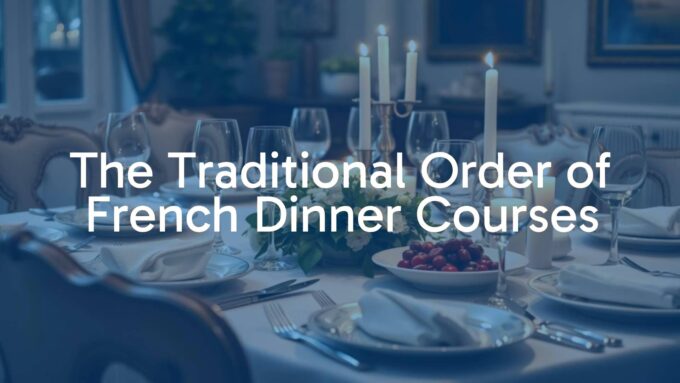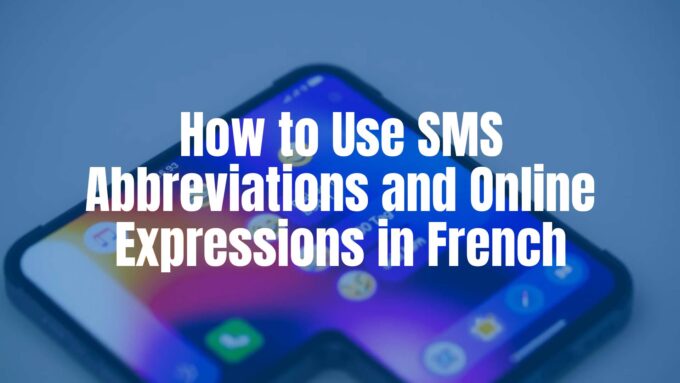Writing professional emails in another language can be tricky. In French, a language known for formality and politeness, using the right email phrases is about more than grammar; it also shows cultural awareness and respect. Professional French email phrases are the words and sentence patterns that help you share your message clearly and politely at work, matching French habits around etiquette and hierarchy. This guide walks you through key phrases, structures, and cultural tips to help you write clear, respectful professional emails in French.
Good French business emails are not simple translations. You need to know the difference between formal and informal language, how to structure your message for clarity, and which greetings and closings fit French business culture. Whether you are making a request, giving information, or following up, the right phrase can help you build and keep strong work relationships.
What Are Professional French Email Phrases?
Professional French email phrases are the foundation of effective written communication in French-speaking workplaces. They are not word-for-word copies from English; they follow French rules for formality and politeness. Using them shows respect for the reader and skill in handling professional exchanges. Think of them as a practical toolkit for clear, polite messages.
In France, and in many French-speaking offices, people prefer formality, especially at the start or when writing to managers. Choose phrases that show respect, and avoid casual language that might be fine elsewhere. These phrases cover openings, requests, sharing information, and closing lines. They help create a message that is clear, structured, and respectful-qualities that matter in French business culture.
Common Situations for Using French Email Phrases at Work
Work brings many situations where you need precise and professional French email phrases. You will use them when contacting a new client or partner, where first impressions matter. For example, in an introduction, a meeting request, or a project pitch, formality and clarity set the right tone. When asking for information, replace a blunt “Send me…” with “Pourriez-vous me faire parvenir…” (Would you please send me…).
You will also rely on these phrases during ongoing work. This includes setting meetings, giving project updates, and asking for clarification. Even with familiar contacts, a professional tone in writing is often preferred. These phrases also help with sensitive cases, like a complaint or an overdue issue, where careful wording can calm the situation and support a positive outcome.
Differences Between Formal and Informal French Email Language
The gap between formal and informal French is one of the most important parts of professional email writing. In work settings, the default is formal. Use “vous” (formal “you”) instead of “tu” (informal “you”), even if you have chatted casually before. “Vous” signals respect and professionalism.
Formal emails use more precise wording and set phrases you rarely see in casual talk. Informal language is for close colleagues, friends, or family. Greetings like “Salut” or closings like “Bisous” are not fit for professional emails and can hurt your image. A contact may later switch to a lighter tone, but start formal and follow their lead if they change it.
How to Structure a Professional Email in French
A clear structure gives a strong first impression. French business culture values clarity, brevity, and a logical order. Arrange your email so the reader quickly sees your goal and can reply easily. Treat each section like a building block that supports the full message.
The look and layout also matter. Use simple sentences, short paragraphs, and a logical flow. Always reread your email before sending to catch errors or awkward lines, so your message looks polished and professional.
Key Parts of a Formal French Email
Most formal French emails follow a standard pattern:
- Objet (Subject): short and accurate.
- Salutation: formal greeting with the right title.
- Opening line: the purpose of your message.
- Body: details, context, and any request.
- Closing line: polite wrap-up or next steps.
- Sign-off and signature: closing phrase, full name, title, and contact details.

Keep the body polite and direct, without jargon or long-winded sentences. Skipping any of these parts can make your message look less professional.
Selecting the Appropriate Salutation: Tu or Vous
The choice between “tu” and “vous” is a key piece of French etiquette and very important in emails. In almost all work situations, use “vous.” This applies even if you met the person once or share a friendly tone in person. French business writing stays formal longer than in many other cultures, so “vous” is the safest choice.
Using “tu” too early can look disrespectful or too familiar. Switch to “tu” only if the other person clearly invites it or if you both already use it in a long-term working relationship.
| Use “vous” when… | Use “tu” when… |
|---|---|
| writing to new contacts, clients, managers, or unknown readers | both sides have agreed to it, or the other person invites you |
| the setting is formal or external (suppliers, partners) | the relationship is close and ongoing inside the team |
Typical Order and Layout of Professional French Emails
A professional French email follows a clear order that helps readability. Start with the “Objet” (Subject), precise and informative. Then add the salutation, using titles like “Madame,” “Monsieur,” or “Chère Madame / Cher Monsieur.” Open with a direct purpose line such as “Je vous écris au sujet de…” (I am writing to you regarding…).
Develop the topic in short, clear paragraphs. State requests, questions, or information politely and plainly. End with a formal closing line like “Dans l’attente de votre réponse…” (I look forward to your reply), a sign-off such as “Cordialement” or “Salutations distinguées,” and your full name and title. This structure makes your email easy to read and professional.
French Greetings and Openings for Professional Emails
The opening sets the tone. It is more than “hello”; it shows respect, notes the recipient’s role, and sets a professional mood from the first word. French business writing is careful about greetings, especially in formal messages.
Choosing the right greeting shows cultural awareness and attention to detail. It helps frame your email as serious and respectful, which helps build trust and signals that your message matters. From standard formal openers to polite neutral options, pick what fits the situation.
Standard Formal Openers
These openers are widely used in formal emails:
- Madame, / Monsieur,
- Madame, Monsieur, (if gender is unknown)
- Cher Monsieur [Nom] / Chère Madame [Nom]
- Monsieur le Directeur / Madame la Présidente
- Messieurs (to a group of men) or Madame, Monsieur (to mixed or unknown)
- À qui de droit (To whom it may concern) – use only if no contact is available
Polite and Neutral Greetings
For a polite but slightly lighter tone, “Bonjour [Nom],” is common, especially if you have already been in touch. It stays professional when followed by “vous” in the body.
When writing to a group of co-workers, “Chers collègues” (Dear colleagues) can work, though less in very formal cases. Remember: keep “vous” throughout. If you are unsure, choose the more formal option.
Essential French Email Phrases for Making Requests and Sharing Information
Many work emails ask for something or share information. In French, wording matters: soften requests and present facts politely so your message is clear without sounding pushy. French offers many expressions that keep a respectful tone in professional exchanges.
Knowing these phrases helps you ask for documents, set meetings, or give updates. They support smooth, respectful communication that builds good rapport.
Phrases for Making and Addressing Requests
Politeness is key when you ask for something. Avoid blunt commands. Use:
- Je voudrais vous demander… (I would like to ask you…)
- Pourriez-vous me faire parvenir…? (Could you please send me…?)
- Auriez-vous l’amabilité de…? (Would you be so kind as to…)
- Je me permets de vous demander si… (May I ask whether…)
For urgent timelines: “Nous vous serions reconnaissant de bien vouloir nous faire parvenir votre réponse avant le [date].” To reply to a request: “Je vous remercie pour votre demande…” These lines help your requests sound polite instead of demanding.
Offering or Requesting Information
When giving information, you can write:
- Je vous écris au sujet de… (I am writing regarding…)
- Suite à… (Following…)
- En référence à… (In reference to…)
- Je tiens à vous informer que… (I would like to inform you that…)
- Vous trouverez ci-joint… (Please find attached…)
When asking for information, try:
- J’aimerais vous demander quelques renseignements… (I would like to ask you for some information…)
- Je souhaiterais obtenir plus de détails concernant… (I would like more details about…)
- Pourriez-vous m’indiquer le prix ? (Could you tell me the price?)
These phrases keep exchanges clear, concise, and professional.
Clarifying Details and Asking Questions
To clarify politely, use:
- Je voudrais savoir si… (I would like to know if…)
- Pourriez-vous me confirmer…? (Could you confirm…?)
- Je m’adresse à vous avec la question suivante: (I am writing with the following question:)
To invite questions: “Nous nous tenons à votre disposition pour toute question.” If you have questions: “N’hésitez pas à me contacter pour toute question que vous auriez.” These lines help clear up any doubts and keep communication smooth.
French Phrases for Professional Email Closings
The closing matters as much as the opening. It is your last chance to show politeness and professionalism. A careful closing strengthens the respectful tone and can shape how the reader feels about your message. French closings are often more elaborate than English ones, reflecting a strong focus on courtesy.
Pick a closing that fits the level of formality and your relationship with the reader. From very formal phrases to friendly but still polite options, each has a role in ending your email gracefully. This shows how the French language values courteous endings.
Formal Closings and Sign-Offs
Formal closings are a key part of professional courtesy. “Cordialement” is common and flexible, similar to “Best regards.” For very formal messages, especially first contacts or very senior people, use:
- Veuillez agréer, Madame/Monsieur, l’expression de mes salutations distinguées.
- Je vous prie d’agréer, Monsieur/Madame, l’assurance de ma considération la plus distinguée.
- Dans l’attente de votre réponse, nous vous prions d’agréer, Madame, Monsieur, nos salutations les meilleures.
These longer closings show high respect and help keep a polished image in French-speaking business settings.
Thanking and Expressing Gratitude
To thank the reader, you can write:
- Avec mes remerciements. (With my thanks.)
- Merci pour votre aide. (Thank you for your help.)
- En vous remerciant par avance. (Thank you in advance.)
- Je vous remercie pour votre email du [date]. (Thank you for your email of [date].)
- Je tiens à vous remercier pour… (I would like to thank you for…)
These expressions make sure your appreciation is clear and help build positive relationships.
Follow-Up and Next Steps Phrases
Emails often move work forward. Use closings that point to what happens next. For waiting on a reply: “Dans l’attente de votre réponse” (I look forward to your reply). To offer help: “Nous restons à votre disposition pour toute information complémentaire” or “N’hésitez pas à nous faire savoir si nous pouvons vous être d’une quelconque utilité.”
For urgent action: “Je vous serais reconnaissant si vous pouviez étudier cette question aussi rapidement que possible.” If you plan to reach out: “Nous vous contacterons dans les plus brefs délais.” These lines make the next steps clear.
French Email Phrase Examples for Specific Work Situations
Beyond general greetings and closings, some work cases need specific phrases for clarity, politeness, and results. Whether you are setting dates, handling concerns, or sending files, the right French expressions save time and help you look professional. These phrases show language skill and an understanding of the situation and its needs.
From scheduling meetings to wording a reply to a complaint, careful choices help you handle many professional cases with confidence and cultural awareness, so your messages are well received and meet their goal.

Scheduling Meetings and Appointments
To propose a meeting: “Nous aimerions prendre rendez-vous avec vous pour discuter des possibilités.” To check availability: “Seriez-vous disponible le [date] à [heure]?”
To confirm: “Je vous confirme notre rendez-vous le [date] à [heure].” To reschedule: “Je vous serais reconnaissant de bien vouloir reporter notre rendez-vous.” These lines help you manage your calendar while keeping a polite tone.
Responding to Inquiries and Requests
Fast, clear replies support good work relationships. To acknowledge: “J’ai bien reçu votre message.” To provide information: “Suite à votre demande, je vous transmets les informations suivantes…”
If you need more time: “Nous vous contacterons dans les plus brefs délais.” If you must refuse: “Nous regrettons de vous informer que…” These responses show care for the sender’s needs.
Sending Attachments or Documents
Be clear about attachments and formats. Use: “Vous trouverez ci-joint le document demandé.” For several files: “Vous trouverez en pièces jointes les documents relatifs à…”
If a special program is needed: “Le fichier joint est au format [format].” If the file is large, mention it. Clear notes about attachments prevent confusion and help the reader access what you sent.
Handling Complaints or Problems
Complaints need a careful, professional tone. To apologize: “Je vous présente mes excuses pour…” or “Veuillez nous excuser pour le retard.” Acknowledge the issue and say it is being handled.
To report a problem: “Je n’ai pas pu ouvrir le fichier joint ce matin. Mon anti-virus a détecté un virus.” To request action: “Je vous serais reconnaissant si vous pouviez étudier cette question aussi rapidement que possible.” These phrases help you manage hard situations in a constructive way.













Leave a comment